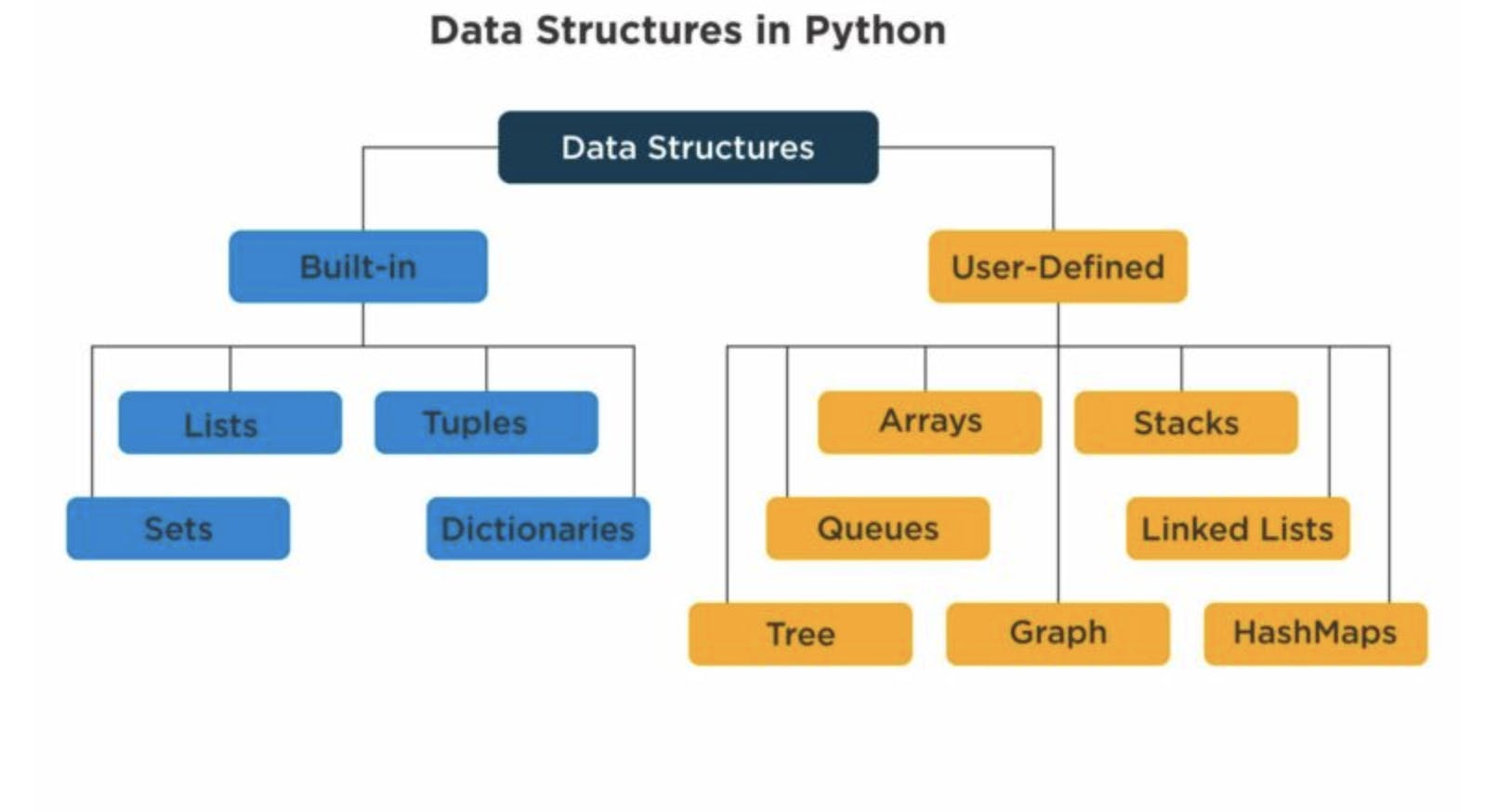Python Data Types and Data Structures for DevOps
Day 14 : 90Days of DevOps Challenge
Table of contents
-> Data Types

In DevOps, Python is a widely used programming language for scripting, automation, and data analysis. The following are the most commonly used data types in Python for DevOps:
Strings: A string is a sequence of characters enclosed in quotes. It is used to represent text-based data and is often used for formatting and manipulating output in DevOps scripts.
Lists: A list is a collection of items that are ordered and changeable. Lists are used to store multiple items in a single variable, making it easier to manage and manipulate large amounts of data.
Dictionaries: A dictionary is a collection of key-value pairs that are unordered and changeable. Dictionaries are used to store and retrieve data based on a unique key, making it easier to access specific pieces of information.
Integers: An integer is a whole number that can be positive, negative, or zero. Integers are used to perform arithmetic operations and to represent numeric data in DevOps scripts.
Floats: A float is a number with a decimal point. Floats are used to represent numeric data with greater precision than integers.
Booleans: A boolean is a data type that can have one of two values: True or False. Booleans are used to represent logical values and to control the flow of execution in DevOps scripts.
By using these data types effectively, DevOps professionals can write scripts that are more efficient, easier to understand, and more maintainable.
-> Data Structures

In DevOps, Python is widely used for scripting, automation, and data analysis. Here are the most commonly used data structures in Python for DevOps:
Lists: A list is a collection of items that are ordered and changeable. Lists are used to store multiple items in a single variable, making it easier to manage and manipulate large amounts of data.
Dictionaries: A dictionary is a collection of key-value pairs that are unordered and changeable. Dictionaries are used to store and retrieve data based on a unique key, making it easier to access specific pieces of information.
Tuples: A tuple is a collection of items that are ordered and unchangeable. Tuples are used to store data that is immutable, meaning that it cannot be modified once it has been created.
Sets: A set is a collection of unique items that are unordered and changeable. Sets are used to perform mathematical operations such as union, intersection, and difference on data sets.
Stacks: A stack is a data structure that follows the last-in, first-out (LIFO) principle. Stacks are used to store and retrieve data in a specific order and are commonly used in DevOps for managing configurations and system state.
Queues: A queue is a data structure that follows the first-in, first-out (FIFO) principle. Queues are used to store and retrieve data in a specific order and are commonly used in DevOps for managing task and job queues.
By understanding these data structures in Python, DevOps professionals can create more efficient and effective scripts for automation, monitoring, and data analysis tasks.
Task :
-> Give the Difference between List, Tuple and set.

-> Create the below Dictionary and use Dictionary methods to print your favourite tool just by using the keys of the Dictionary.
dev_tools = {
1:"Linux",
2:"Git",
3:"Docker",
4:"Kubernetes",
5:"Terraform",
6:"Ansible",
7:"Chef"
}

-> Create a List of cloud service providers.
Write a program to add Digital Ocean to the list of cloud_providers and sort the list in alphabetical order.
cloud_providers = ["AWS","GCP","Azure"]

Thank You for Reading the Blog.. 👍
Connect with me : linkedin.com/in/shivraj-salunkhe-5881141a4
Follow my blog channel : shivrajofficial.hashnode.dev